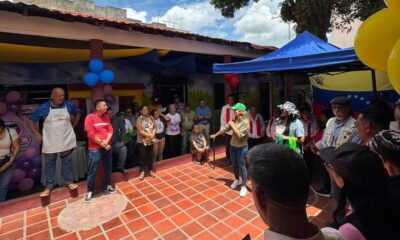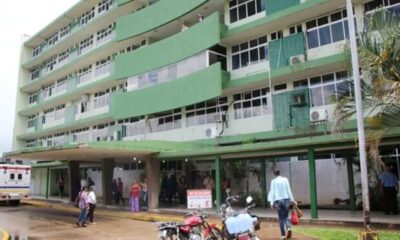Hombre & Mujer
AOD-9604 Peptide: Potential Implications in Regenerative and Metabolic Research

AOD-9604, a synthetic peptide fragment derived from the C-terminal region of growth hormone (hGH), has garnered interest in scientific research for its potential utility in metabolic and regenerative implications. Its unique structure, consisting of amino acids 177–191 of hGH, is believed to allow it to retain certain functional properties of the hormone without activating hGH receptors, thus distinguishing it from full-length growth hormone. This property suggests that AOD-9604 may hold promise in a range of scientific domains, from exploring metabolic regulation to investigating tissue repair mechanisms.
Structural Characteristics and Mechanisms
AOD-9604 is a short peptide believed to replicate a specific sequence of hGH, theorized to play a role in lipid metabolism. Research indicates that by selectively binding to receptors or cellular pathways associated with fat metabolism, the peptide might influence the breakdown of lipids without engaging in growth-related processes typically associated with hGH. This selective mechanism makes AOD-9604 a promising molecule for studying metabolic functions.
It has been hypothesized that the peptide may exert its impacts by stimulating pathways linked to lipolysis while potentially inhibiting lipogenesis. These mechanisms are of particular interest for research on metabolic syndromes, where imbalances in lipid storage and utilization are a central concern. Furthermore, its structural stability and specificity suggest it might serve as a tool for mapping the intricate networks of metabolic regulation, offering insight into how cells balance energy storage and expenditure.
Metabolic Research Implications
AOD-9604 has been explored for its potential to advance the understanding of lipid metabolism. Lipid dysregulation is a hallmark of many chronic conditions, such as obesity and metabolic syndrome, which present significant challenges. Investigations purport that the peptide may serve as a model compound for investigating the biochemical pathways involved in adipose tissue dynamics.
In in vitro systems, AOD-9604 has suggested the potential to support the breakdown of triglycerides in adipocytes. This suggests that it might help elucidate the molecular triggers of lipolysis. Researchers theorize that by modulating lipolytic activity, AOD-9604 may help identify novel molecular targets for addressing metabolic imbalances. Such investigations might provide valuable insights into how lipid metabolism may be influenced in non-growth-related pathways, offering a more targeted approach to studying energy homeostasis.
Additionally, findings imply that the peptide might help explore the interplay between metabolism and cellular energy production. By investigating its impact on lipid utilization, researchers might gain a clearer picture of how adipocytes contribute to overall energy balance. This data may extend to studies of conditions where energy dysregulation is a core feature, such as type 2 diabetes and metabolic inflammation.
Possible Role in Regenerative Research
Beyond its metabolic implications, AOD-9604 is being considered for its potential impacts on tissue repair and regeneration. The peptide’s possible role in cellular signaling pathways, particularly those involving tissue remodeling, may make it a valuable candidate for investigating regenerative processes. While its precise mechanisms remain under investigation, it has been hypothesized that AOD-9604 might stimulate specific cascades that promote cellular turnover or repair damaged tissues.
In models of tissue injury, the peptide has been hypothesized to serve as a focal point for studying how peptide-based interventions may influence healing processes. For example, its possible role in modulating collagen synthesis might provide insights into strategies for supporting epidermal layer integrity and wound healing. Additionally, findings imply that AOD-9604 might aid in exploring how metabolic factors impact tissue repair, as metabolic and regenerative pathways are often interconnected.
Another area of interest is the peptide’s potential in musculoskeletal research. Tissue degradation, whether due to cellular aging, overuse, or trauma, represents a significant area of scientific inquiry. By studying AOD-9604, researchers might gain a deeper understanding of how peptides influence cartilage and muscle cell regeneration. Such insights may contribute to the development of novel approaches for addressing degenerative conditions in these tissues.
Exploring Intersectional Implications
The dual focus of AOD-9604 on metabolic and regenerative processes suggests that it may play a role in bridging these domains. For instance, metabolic integrity is intrinsically linked to the capacity to repair and regenerate tissues. Researchers hypothesize that compounds like AOD-9604 might help clarify how these processes interact. Such investigations might provide a holistic understanding of how energy balance and tissue integrity are maintained in complex biological systems.
Scientists speculate that the peptide may also be a helpful tool in studying cellular aging, a process where metabolic slowdown and diminished regenerative potential are closely intertwined. By examining AOD-9604’s impacts on these pathways, scientists may uncover molecular patterns associated with the cellular aging process, potentially identifying targets to mitigate cellular age-related declines in metabolic and regenerative functions.
Future Directions and Experimental Opportunities
The potential implications of AOD-9604 in scientific research are vast, spanning metabolic, regenerative, and intersectional fields. Moving forward, experimental studies might aim to:
- Elucidate Lipid-Specific Pathways: Detailed research on how AOD-9604 may influence specific lipid metabolism pathways might identify unique molecular interactions, offering new angles for addressing metabolic disorders.
- Tissue-Specific Impacts: Investigating how the peptide operates in various tissue types may suggest its role in promoting repair and maintaining cellular homeostasis.
- Interplay with Other Molecules: Exploring synergistic impacts between AOD-9604 and other signaling molecules may help decode complex biological networks, offering insights into comprehensive metabolic and regenerative strategies.
- Impact of Structural Modifications: Investigations into how alterations in AOD-9604’s structure affect its bioactivity might help refine its implications, tailoring its properties for specific research purposes.
Conclusion
AOD-9604 is a versatile peptide with potential implications in metabolic and regenerative research. By modulating lipid metabolism and possibly influencing tissue repair pathways, the peptide offers unique opportunities to explore fundamental biological processes. Future investigations may uncover new dimensions of its impacts, broadening the horizons of peptide-based research and advancing our understanding of the complex mechanisms underlying metabolic and regenerative science. Through rigorous scientific inquiry, AOD-9604 may serve as a stepping stone to novel insights in these domains. AOD 9604 peptide is available at Biotech Peptides. None of the compounds mentioned in this paper have been approved for consumption. They should not be acquired or utilized by unlicensed individuals outside of controlled research environments such as labs.
References
[i] Kharitonov, V. M., & Kozlov, A. P. (2020). Role of peptides in the regulation of lipid metabolism. Peptides, 132, 170367. https://doi.org/10.1016/j.peptides.2020.170367
[ii] Zinn, A., & Silverman, J. S. (2018). Peptide-based therapeutics in metabolic diseases: An overview. Trends in Endocrinology & Metabolism, 29(8), 552-562. https://doi.org/10.1016/j.tem.2018.04.004
[iii] Lee, S., & Alhaddad, A. (2019). Growth hormone derivatives: Potential roles in tissue repair and regenerative medicine. Endocrinology and Metabolism Clinics of North America, 48(2), 247-261. https://doi.org/10.1016/j.ecl.2019.02.004
[iv] Fernández, L. A., & Macias, J. M. (2021). The intersection of metabolism and regeneration: Insights from peptide-based therapies. Regenerative Medicine, 16(3), 239-250. https://doi.org/10.2217/rme-2020-0127
[v] Hu, B., & Jiang, M. (2017). Metabolic effects of synthetic peptides and their applications in obesity and diabetes management. Journal of Diabetes Research, 2017, 8416143. https://doi.org/10.1155/2017/8416143
Hombre & Mujer
KALA presenta “Horizontes de Sol y Sal”, una colección cápsula inspirada en paisajes venezolanos

La firma venezolana de resortwear KALA, dirigida por la diseñadora y modelo Laura Zabaleta, presentó oficialmente su nueva colección cápsula para la temporada de vacaciones de verano, titulada “Horizontes de Sol y Sal”.
La propuesta está inspirada en paisajes venezolanos bañados por el sol, la sal y el viento, y explora texturas que evocan libertad, feminidad y movimiento.
Producida íntegramente en Venezuela y en cantidades limitadas, la colección incorpora materiales sostenibles y el trabajo artesanal de más de diez mujeres de distintas regiones del país.
Las piezas combinan técnicas tradicionales como el crochet, el macramé y el bordado manual.
Fundada en 2020, KALA ha evolucionado en cinco años desde la creación de carteras y accesorios tejidos hasta convertirse en una firma que integra trajes de baño y prendas complementarias.
Cada colección busca reconectar con lo esencial: la tierra, el alma y la belleza de lo hecho a mano. Su narrativa visual armoniza lo sensorial con lo emocional, celebrando lo auténtico, lo artesanal y lo consciente, con una estética femenina y toques de sensualidad.
Laura Zabaleta, con formación en moda y negocios entre Venezuela y Europa, gestiona la marca como un puente entre el diseño contemporáneo y la artesanía ancestral.
KALA apuesta por una moda con propósito, combinando producciones limitadas, procesos manuales y un compromiso genuino con la sostenibilidad.
Toda su producción se realiza en el país, en colaboración con talleres y comunidades artesanas que preservan técnicas tradicionales.
La firma utiliza fibras naturales, textiles certificados OEKO-TEX® y procesos de sublimación sin agua para reducir su impacto ambiental.
La colección “Horizontes de Sol y Sal” es una oda sensorial al encuentro entre el mar y el desierto.
Incluye bikinis, un modelo de trikini y prendas complementarias como faldas, pantalones, conjuntos y vestidos asimétricos en degradé, con tejidos que reflejan la luz como arena dorada.
Desde el diseño hasta la comunicación visual, la cápsula recorre paisajes venezolanos con tonos cálidos, formas orgánicas y materiales nobles.
KALA está presente en redes sociales como @kala.ve, en su showroom en la urbanización El Cafetal, en su sitio web www.marcakala.com y en las tiendas multimarca Siete Mares™ en Caracas y Valencia.
La firma también realiza envíos internacionales y tiene presencia en mercados clave como Dubái, Miami y Ciudad de México.


Te invitamos a leer
Rels B lanza “afroLOVA 25’”, un proyecto musical que celebra el amor y los ritmos afrocaribeños
Infórmate al instante únete a nuestros canales
WhatsApp ACN – Telegram NoticiasACN – Instagram acn.web – TikTok _agenciacn – X agenciac
-

 Deportes23 horas ago
Deportes23 horas agoMás de 100 atletas participan en II Torneo Nacional “Batalla de Carabobo” de Tiro con Arco
-

 Carabobo22 horas ago
Carabobo22 horas agoInaugurado Centro de Exposición Permanente “Hecho en Comuna” en Naguanagua
-

 Espectáculos16 horas ago
Espectáculos16 horas ago«Al pie del Támesis» regresa al Trasnocho como homenaje a Mario Vargas Llosa
-

 Carabobo20 horas ago
Carabobo20 horas agoAlcaldía de San Diego y UJAP entregaron certificados como asistentes técnicos a 117 jóvenes del programa “Apoyo a la Comunidad”















